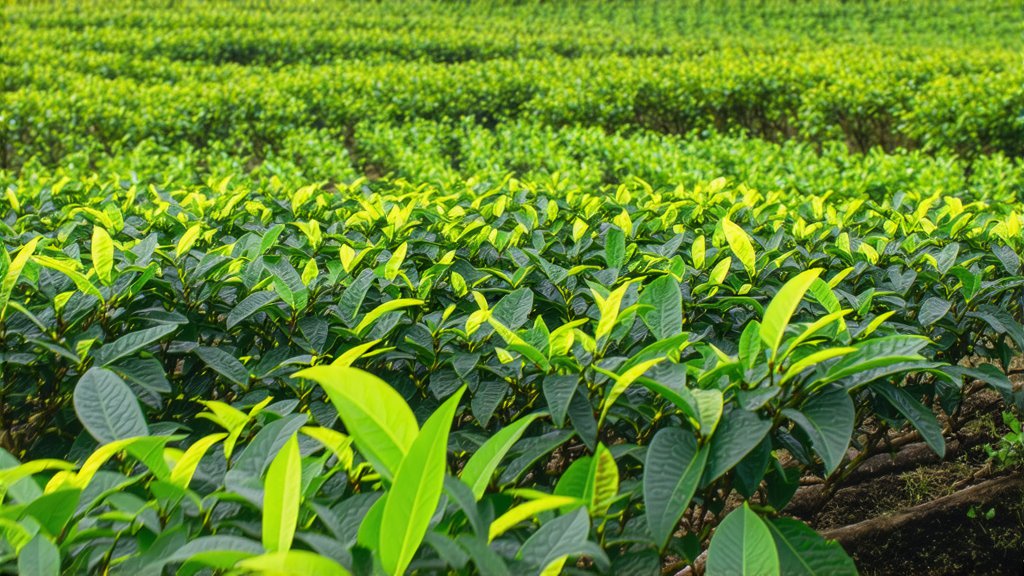
Nestled in the lush mountains of Fujian province, China, lies a treasure trove of tea history and tradition—Tieguanyin, an exquisite variety of oolong tea that has captivated tea enthusiasts for centuries. As an expert in Chinese tea culture and a master of tea art, I am delighted to take you on a journey through the rich heritage, diverse varieties, intricate manufacturing process, and sophisticated tasting techniques of this remarkable tea.
A Historical Voyage
The story of Tieguanyin begins in the heart of Anxi County, where legend has it that a pious man named Wei Yu was blessed by a divine vision. In this dream, he discovered a unique tea plant growing in the remote mountains. This plant bore leaves that could be twisted into tight, ball-shaped pellets, resembling the iron (tie) nails (guan yin) used in traditional Chinese architecture. Hence, the name "Tieguanyin" or "Iron Goddess of Mercy."
The cultivation and production of Tieguanyin can be traced back to the early Qing Dynasty (1644-1912), making it one of the oldest known oolong teas. Over time, its reputation spread far and wide, earning it a place among China's most revered teas and eventually becoming a symbol of Chinese tea culture.
Varieties and Characteristics
Tieguanyin is not just a single type of tea but rather a family of related varieties, each with its own distinct characteristics. The two primary types are Qing Xin (Green Heart) and Rou Gui (Soft Cinnamon). Qing Xin is known for its floral aroma and light, refreshing taste, while Rou Gui boasts a spicier, more complex flavor profile with hints of cinnamon and cloves.
Within these main categories, there exist numerous sub-varieties, such as Huang Jin桂 (Golden Osmanthus), which combines the floral notes of Qing Xin with the fruity sweetness of osmanthus flowers, and Mi Lan Xiang (Honey Orchid), characterized by its honeyed fragrance and mellow taste. Each variety offers a unique sensory experience, reflecting the diversity of Anxi's terroir and the skillful craftsmanship of local tea farmers.
The Art of Tieguanyin Production
Crafting Tieguanyin is an art form that requires precision, patience, and a deep understanding of nature. The process begins with carefully selecting the finest tea leaves from mature bushes, typically grown at high altitudes where cooler temperatures and misty conditions contribute to the tea's distinctive flavors.
-
Plucking: Only the top two or three leaves and the bud are harvested, usually during the spring season when the leaves are at their freshest and most vibrant.
-
Sun Withering: The freshly picked leaves are spread out under the sun to reduce moisture content slightly, allowing enzymes to start breaking down complex carbohydrates into simpler sugars, which enhance sweetness.
-
Cooling: After sun withering, the leaves are moved indoors to cool down and rest, preventing overheating and preserving the delicate aromas.
-
Fixation: The leaves undergo a brief high-temperature treatment to halt enzymatic activity, preserving their green color and fixing their flavors.
-
Rolling: The fixed leaves are then rolled into tight pellets or spiral shapes, a process that helps release essential oils and further develops the tea's characteristic aroma.
-
Drying: Finally, the shaped leaves are slowly dried to remove any remaining moisture, ensuring longevity without compromising quality.
Throughout this meticulous process, tea masters rely on their senses—sight, smell, touch—to gauge the optimal stages of transformation, demonstrating the profound connection between man and nature in tea making.
Savoring the Iron Goddess
To truly appreciate Tieguanyin, one must engage in the ritual of Gongfu tea, a traditional Chinese method of steeping that emphasizes control, temperature, timing, and water quality to extract the full spectrum of flavors and aromas.
-
Warming the Teaware: Begin by warming the teapot and cups with hot water to maintain the brewing temperature and prevent the tea from cooling too quickly.
-
Measuring: Use approximately 5 grams of Tieguanyin per 100ml of water. Place the leaves into a Yixing clay teapot or a Gaiwan, a shallow bowl-like vessel ideal for oolongs.
-
Steeping: Pour hot water (around 90-95°C or 194-203°F) over the leaves, quickly swirling and then discarding this initial rinse to 'wake up' the leaves and remove any impurities. For subsequent infusions, steep for about 20-30 seconds, gradually increasing the time as the leaves unfurl.
-
Aroma Appreciation: Before sipping, inhale deeply to capture the evolving scents released by each steep, noting how they change with every pour.
-
Tasting: Sip slowly, allowing the tea to coat your palate fully, savoring its complexity—from the initial floral or fruity notes to the underlying sweetness and lingering finish. Pay attention to the texture, mouthfeel, and aftertaste.
Tieguanyin is best enjoyed in multiple short sessions, as each subsequent infusion reveals new dimensions of flavor and aroma, akin to peeling away layers of an onion. It's a meditative practice that invites reflection and mindfulness, embodying the essence of Chinese tea philosophy.
In conclusion, Tieguanyin stands as a testament to China's rich tea heritage, offering a window into the country's cultural depth and natural beauty. Whether you're a seasoned tea connoisseur or a curious novice embarking on your tea journey, exploring Tieguanyin promises an unforgettable adventure filled with discovery, delight, and profound appreciation for this timeless elixir from Anxi.
Keywords: Tieguanyin, Anxi Oolong, Chinese Tea Culture, Tea Tasting, Gongfu Tea